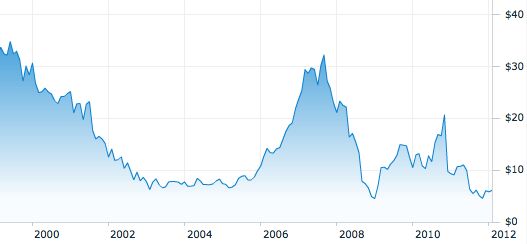Italy Seizes Gaddafi's Stake In Fiat
A year ago nearly to the day, I was investigating the connection between Libyan dictator Muammar Gaddafi and Fiat. With an American-led intervention in Libya underway, Reuters had reported that a Wikileaked State Department document revealed that the Libyan Government owned a two-percent stake in the automaker Fiat as recently as 2006. When I contacted Fiat’s international media relations department for comment, I received this response:
Dear Mr Niedermeyer,
Further to your email, I would mention that the Reuters report you refer to is incorrect. As too are other similar mentions that have appeared recently in the media concerning the LIA’s holdings in Fiat.
The LIA sold all of its 14% shareholding in Fiat SpA in 1986 – ten years after its initial stake was bought. It no longer has a stake in Fiat SpA.
I trust that this clarifies the matter.
It didn’t, actually. In fact the matter remained as clear as mud to me until just now, when I saw Reuters’ report that Italian police have seized $1.46 billion worth of Gaddafi assets, including “stakes in… carmaker Fiat,” under orders from the International Criminal Court.
So, did Fiat lie? Not exactly. The Libya Arab Foreign Bank did sell back its shares in 1986, but the Wikileaked memo claimed that a successor entity, the Libyan Arab Foreign Investment Company, was the more recent Libyan investor. Not being well-versed in the structure and history of Libya’s sanction-avoiding foreign investment shell companies, and lacking the resources to effectively pursue the story ( tracking Gaddafi-era investments is a chore), I left it there. And even now that Italian police confirm that a Gaddafi-controlled stake in Fiat has been seized, it’s not at all clear whether Fiat’s management was aware of this.
The AGI has the most detailed account, reporting
The Guardia di Finanza Corps of Rome has seized property worth more than 1.1 bln euro from members of the Ghaddafi family upon a warrant of the International Criminal Court of The Hague. The property seized includes real estate, company shares and bank accounts that belong to members of the Ghaddafi family or to people of Ghaddafi’s entourage with an overall value of more than 1.1 bln euro
Property investigations carried out by the GdF of Via dell’Olmata, in Rome have enabled to discover two financing companies through which leaders of the former Libyan regime had made investments in Italy. [emphasis added]
That covers Fiat management fairly well: at the very least, it appears that they didn’t know about Libyan investment until police were involved. I might suspect that this very Gaddafi stake in Fiat was frozen by Italian authorities prior to my request for comment, and Fiat’s representative misled me about it… but I have no way of proving it. Time will (hopefully) tell.
Meanwhile, on this side of the pond, it’s only a little strange that this wasn’t somehow brought to light in pre-bailout vetting of Fiat. Sure, a foreign enemy of the United States was a significant shareholder in the firm that was handed a bailed-out Chrysler for no cash down. On the other hand, Libya was not on the War On Terror radar at the time, and the auto task force had enough to worry about without investigating Fiat’s shareholders. All the same, chalk this up as yet another example of the unintended consequences of government intervention in the economy.
Finally, there’s the real question: did Gaddafi actually benefit from his Fiat investment? It all depends on when this second investment in Fiat shares took place. The Wikileaked memo says Libya owned two percent of Fiat as of 2006, which means it was enjoying the short-lived Marchionne boom ( financed in part by General Motors) after years of decline and stagnation. And when things headed south in 2008, snagging Chrysler for nothing sent Fiat stock on its last real bounce… which means the Gaddafi regime did benefit to some extent from the auto bailout. Still, with Fiat’s shares pricing at all-time lows the Libyan dictator almost certainly lost money on his Fiat investment over the years. Unless the Guardia di Finanza find evidence that Fiat’s management knew about Libyan investment, this might well be a case of “no harm no foul.”
More by Edward Niedermeyer
Latest Car Reviews
Read moreLatest Product Reviews
Read moreRecent Comments
- Funky D The problem is not exclusively the cost of the vehicle. The problem is that there are too few use cases for BEVs that couldn't be done by a plug-in hybrid, with the latter having the ability to do long-range trips without requiring lengthy recharging and being better able to function in really cold climates.In our particular case, a plug-in hybrid would run in all electric mode for the vast majority of the miles we would drive on a regular basis. It would also charge faster and the battery replacement should be less expensive than its BEV counterpart.So the answer for me is a polite, but firm NO.
- 3SpeedAutomatic 2012 Ford Escape V6 FWD at 147k miles:Just went thru a heavy maintenance cycle: full brake job with rotors and drums, replace top & bottom radiator hoses, radiator flush, transmission flush, replace valve cover gaskets (still leaks oil, but not as bad as before), & fan belt. Also, #4 fuel injector locked up. About $4.5k spread over 19 months. Sole means of transportation, so don't mind spending the money for reliability. Was going to replace prior to the above maintenance cycle, but COVID screwed up the market ( $4k markup over sticker including $400 for nitrogen in the tires), so bit the bullet. Now serious about replacing, but waiting for used and/or new car prices to fall a bit more. Have my eye on a particular SUV. Last I checked, had a $2.5k discount with great interest rate (better than my CU) for financing. Will keep on driving Escape as long as A/C works. 🚗🚗🚗
- Rna65689660 For such a flat surface, why not get smoke tint, Rtint or Rvynil. Starts at $8. I used to use a company called Lamin-x, but I think they are gone. Has held up great.
- Cprescott A cheaper golf cart will not make me more inclined to screw up my life. I can go 500 plus miles on a tank of gas with my 2016 ICE car that is paid off. I get two weeks out of a tank that takes from start to finish less than 10 minutes to refill. At no point with golf cart technology as we know it can they match what my ICE vehicle can do. Hell no. Absolutely never.
- Cprescott People do silly things to their cars.


































Comments
Join the conversation
Well, E.D., you've been vindicated. Good job.
"With an American-led intervention in Libya underway" Replace 'American' with French and UK...there's a good chap...